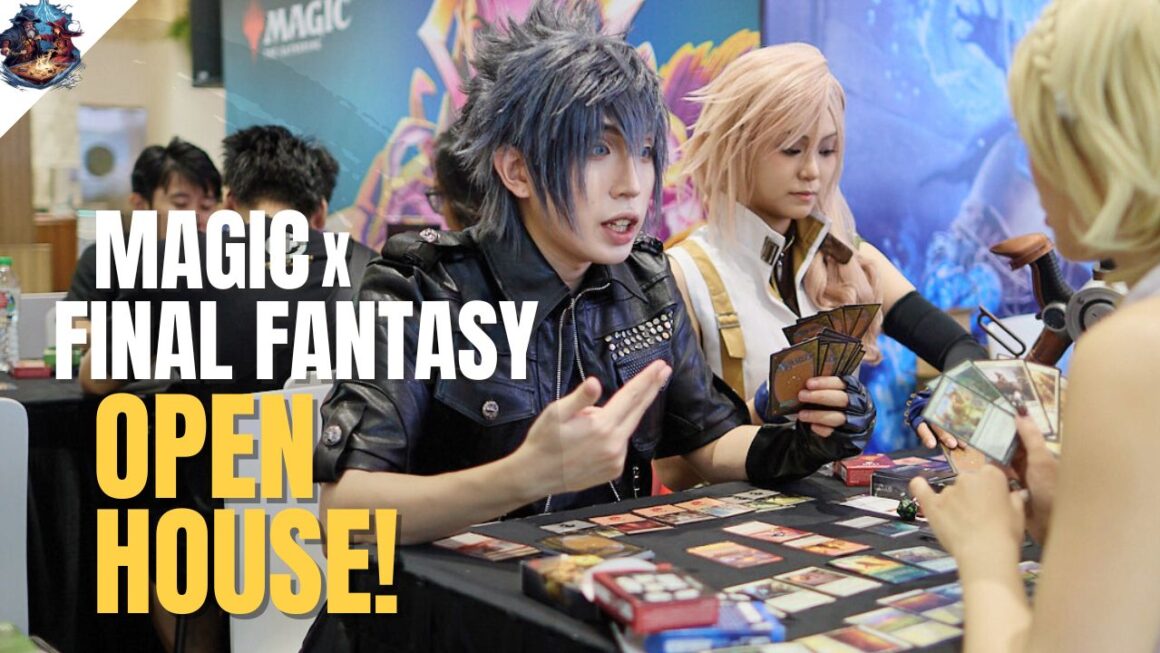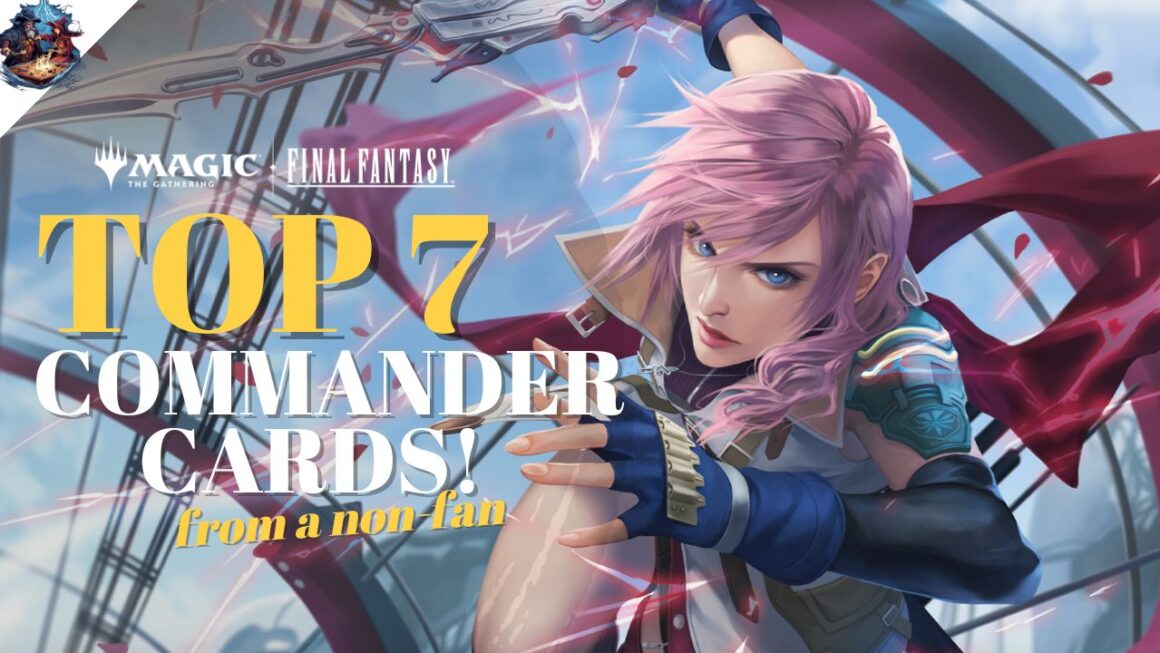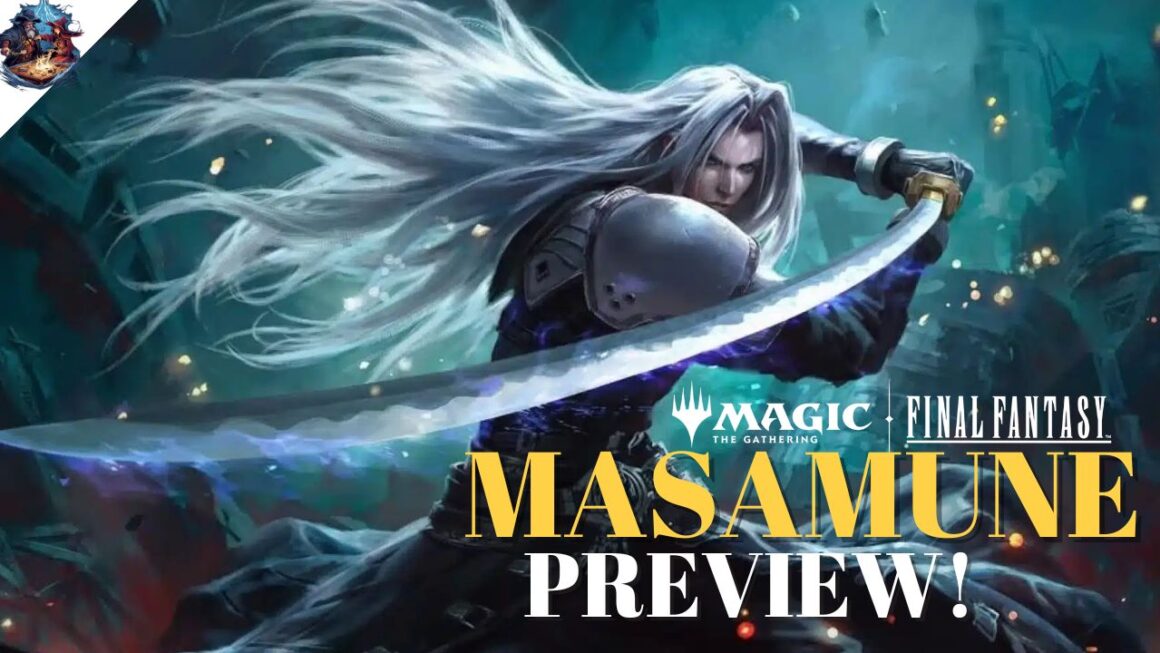“Hey, you, you’re finally awake. You were trying to cross the border, right? Walked right into that imperial ambush, same here.” Yes, that’s from Skyrim and not MTG, but it aptly describes what many beginners experience when they choose a Commander for their deck.
Commander (or EDH, as some players call it) is a casual format built for both multiplayer and 1v1 environments, where games tend to be more relaxed and less cutthroat than the games of Standard and Modern at your local Friday Night Magic event.
To choose a Commander is like being a kid in a candy store – so many options, too little time.
So let’s take this process one idea at a time:
Idea 1: Not All Commanders Are Made Equal.
Let’s address the elephant in the room, And I don’t mean Frankie Peanuts.
Certain Commanders tend to have better abilities than others, such as having built-in abilities to draw cards, summon Creatures to the Battlefield or return cards from the Graveyard (also known as recursion). Others can grow at exponential rates depending on cards in play, while others buff up their allies to make a big, beefy army.
As such, cards such as Veldrane of Sengir, Stangg and Daghatar the Adamant pale in comparison to Commanders who can do what they can do better, namely Skithiryx, the Blight Dragon, Omnath, Locus of Rage and Kathril, Aspect Warper.

Often, the problem lies in having detrimental abilities or non-synergistic/parasitic abilities that can cause the power level of the deck to plummet.
Abilities like Mutate, Morph and Bushido all make for great Limited/Standard set mechanics, but can appear quite weak in Commander since they require specific requirements to setup. (Mutate requires you to already have a non-human creature on the field, and rewards you for stacking multiple mutate creatures…which makes “board wipes” devastating)
Though these weaker Commanders may act as great deck building challenges, they may not survive for long against a The Locust God’s angry flying insect army, or the devastating combos unleashed by Rashmi, Eternities Crafter. Choose a Commander that is not only just mediocre, always find out if there are options out there that can do the same thing, but better.
Idea 2: What Will Your Pleasure Be?
Each Commander lends itself to a different play style, with some more suited to helming their strategy, and others supplementing it. So keep that in mind when choosing your Commander.
Common Commander deck themes (and most often seen Commanders) include:
Spellslinging (Mizzix of the Izmagnus, Kess, Dissident Mage)
Graveyard Reanimation (Meren of Clan Nel Toth)
Aristocrats a.k.a Sacrifice (Teysa Karlov)
Mill (Phenax, God of Deception, Lazav, the Multifarious)
The yearly pre-constructed Commander decks lend themselves to these themes, but can sometimes feel a bit divided, as they tend to derivate from the main theme to support their own sub-themes, causing the decks to play out awkwardly, often feeling non-synergistic and clunky.
It’s possible to build a deck around a Commander, but also possible to build a Commander around a deck. My advice is to choose a Commander first, and then dig into the massive 20,000 card MTG archive to find which cards suit it best.
Idea 3: Too Many “Chefs” Ruin The Deck
Many new players make the mistake of cramming too many strategies or game plans into the same deck, which can result in unfocused, clunky and dysfunctional gameplay.
The remedy to such a problem is quite simple: Select 2 or 3 closely synergistic strategies or themes and stick to them during deck building.
What do I mean by “closely synergistic?”
Themes such as +1/+1 counters, Planeswalker Loyalty, and Infect can be considered “closely synergistic”, as they can be affected by cards that use the Proliferate mechanic, and also by many cards that double the number of counters on Permanents or players.
Another closely synergistic theme is to make use of Mill and Reanimator cards. You would, ideally, target yourself with the Mill triggers to fill your Graveyard up with big payoffs like Blightsteel Colossus or Sheoldred, Whispering One to turn the tides in your favour.

As such, choose a Commander with a broader utility to allow you to diversify your game plan, rather than sticking to a linear win condition.
Why trade free Land drops, from Chulane, Teller of Tales’s ability, with Arcades, the Strategist just to build yourself an army of walls that have very limited use, and a draw engine that only works for a certain type of creature?
Idea 4: Mana, oh Mana
Another rookie mistake when choosing your Commander is not taking into consideration the colours that the Commander belongs to (known as Colour Identity), as well as its Converted Mana Cost (the Mana symbols in its top right corner)
Let’s start with Colour Identity. A Commander such as Jhoira, Weatherlight Captain has Blue and Red Mana symbols on the card, which means your entire deck can contain cards only with those Mana symbols.
Therefore those playing in Temur colours (Blue, Red and Green) will have access to Green cards that players in Izzet colours (Blue and Red) would not, such as good ramp spells like Explosive Vegetation or Cultivate. Land ramp itself is hard to come by in Izzet colours, since they focus more on the spell casting aspect of the game.
Apart from colour identity, you also have to think about overall cost. Choosing a commander with a high (or very restrictive) Converted Mana Cost lends itself to an uphill struggle to cast your Commander in the early game to establish dominance on the battlefield, and you may face dastardly setbacks when your Commander is destroyed as you’ll need to recast it, which can set you back a turn.
Idea 5: Weigh Complications Against Versatility
But as stated above, even though some Commanders with access to more colours can run cards that others cannot, this poses a challenge to you, new player!
How big is your budget?
The more colours you run in a deck, the more different coloured Lands you’ll need. Running only Basic Lands can screw you over as you could be out of a certain colour of mana (colour-screwed) more often than not in 3,4 and 5 colour decks.

Typically, mono-colour and 2-colour Mana bases can be constructed with a decently high number of Basic Lands, with a few lands that either tap for both colours or act as utility (like Reliquary Tower) thrown into the mix. As such, the average cost of these Mana bases tends to be much cheaper due to the greater consistency these decks have in obtaining the colours of Mana that you need from basics alone, as opposed to the more expensive tri-coloured Lands and Dual Lands that make up a large number of 4 and 5 colour Mana bases.
And no, Tapped Dual Lands simply do not provide as much versatility and efficiency as untapped Dual Lands. Having that 1 extra Mana in the early to mid game makes all the difference in the late game.
End Step: Just Choose A Commander
I hope this article would help you aspiring players decide on a Commander to begin your journey of constructing a deck. After all, the Commander format is one of the recommend ways to get into MTG.
Commander is huge and vibrant format, with plenty of competitive decks, and many capable Commanders. Choose a Commander that resonates with you the most, stick with it for awhile. Even if you get bored with it, start the whole process again.




